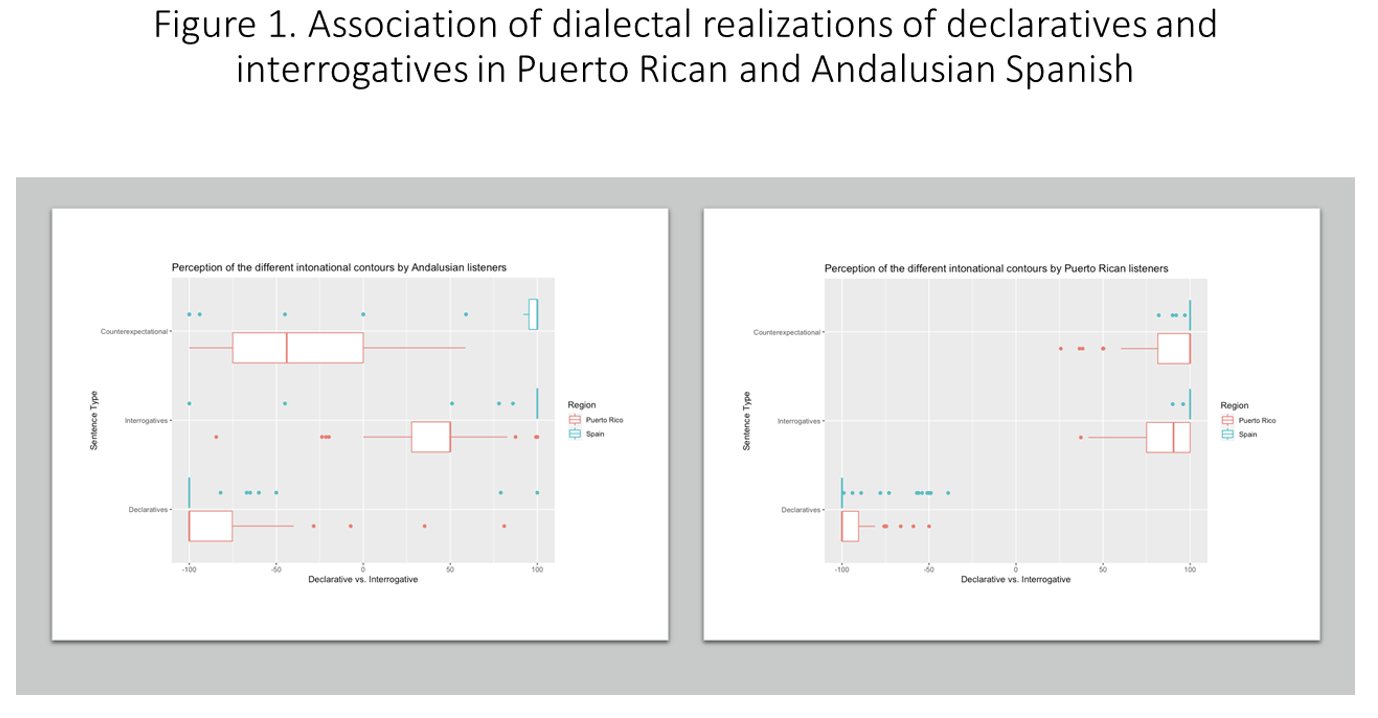Paper presentation at NWAV 50.
Arróniz, S. & Willis, E. How to resolve the question? Dialectal variation of utterance types in Andalusian and Puerto Rican Spanish. New Waves of Analyzing Variation. Stanford University, CA. October 2022.
Abstract
This study examines the interpretation of declaratives, broad focus interrogatives and counter-expectational interrogatives in Western Andalusian (Congosto Martín 2007; Henriksen and Amaya 2012) and Puerto Rican Spanish (Armstrong 2010). Both dialects share some final tonal patterns with some variations and their final tonal patterns are undocumented. Declaratives in both varieties have a Low nuclear pitch accent followed by a L% boundary tone with different degrees or patterns of the nuclear Low. Broad-focus interrogatives are reported to have a falling contour in Puerto Rican Spanish (H+L* L%) and a rising pattern has been reported in Andalusian Spanish (L* H%), setting up a potential confusion. Furthermore, counter-expectational interrogative patterns in Puerto Rican Spanish are described with a final rising pattern (L+H* L%), while Andalusian Spanish has a final rise (L* H%), which sets up another mismatch of patterns to phonological interpretation of utterance type.
Caribbean Spanish interrogatives are often described as having a falling intonational contour in normal interrogatives (Armstrong 2010, Willis 2010, García Riverón 1996-see Lipski for additional references). A falling interrogative contour has recently been described in Peninsular Spanish, but only in the Madrid and Oviedo dialects and in a narrow context of counter-expectational questions (echo-yes/no questions). However, the tonal alignment of the prenuclear pitch accent has been described as having a L*+H in general broad focus interrogatives, similar to Caribbean varieties, but without the final fall. This project is an initial attempt to understand how variable intonational contours are (mis)interpreted across two Spanish dialects. Two speakers from Puerto Rico and one speaker from Seville, Spain, produced the stimuli for the different perception experiments, which included 14 utterances of broad focus declaratives, 14 broad focus yes/no interrogatives, and 14 counter-expectational interrogatives based on the contours documented in the Interactive Atlas of Spanish Intonation (Prieto and Roseano 2010). An utterance type selection task and a declarative to interrogative continuum judgment task were created from these utterances. The utterance type selection task consisted of 15 utterances, and for each of them participants had to select the sentence meaning from a total of five possible options. The continuum judgment task included a total of 15 utterances, for which participants had to place a slider in a declarative/interrogative continuum. Both tasks were presented through the Qualtrics platform to 57 Puerto Rican listeners and 35 Andalusian listeners.
The findings indicated that both groups could identify and associate declarative contours as declaratives. Both interrogative types of Puerto Rican contours were consistently and confidently identified as interrogatives by the Puerto Ricans listeners. However, the Andalusian listeners while accurate in recognizing declarative they were less certain in their recognizing the falling contour of broad focus interrogatives as a question. The counter-expectational contours were generally recognized as declaratives by the Andalusian listeners. Our findings indicate that specific intonation patterns can be interpreted differently based on Spanish dialect and may result in the misinterpretation of the utterance.
